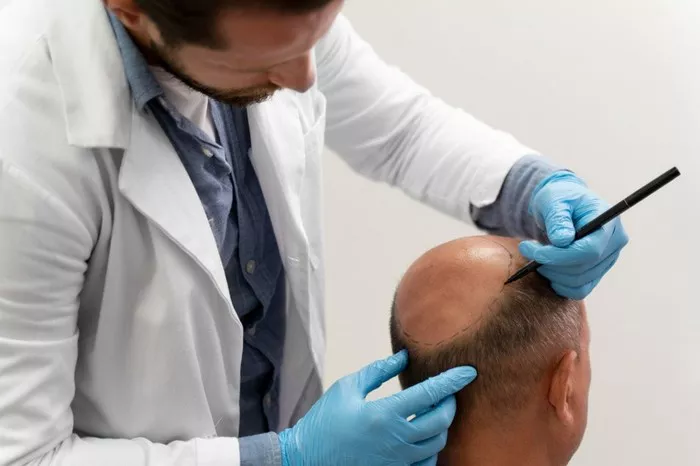Hair loss can have a significant impact on a person’s confidence and self-image, leading many to seek permanent solutions like hair transplantation. As one of the most popular and effective treatments for hair loss, hair transplant surgery promises natural-looking results and long-term benefits. However, a common concern among prospective patients is: Can you lose transplanted hair? This comprehensive guide will explore the science behind transplanted hair, why shedding can happen, and how to ensure the best outcome from your procedure.
Understanding How Hair Transplants Work
To understand whether you can lose transplanted hair, it’s essential to first grasp how the procedure works. Hair transplants involve harvesting hair follicles from a donor area (usually the back or sides of the scalp) and implanting them into areas experiencing hair loss. These follicles are genetically resistant to balding, making them ideal for transplantation. There are two primary methods used:
- Follicular Unit Transplantation (FUT): A strip of scalp is removed and dissected into individual grafts.
- Follicular Unit Extraction (FUE): Individual follicles are extracted directly from the donor area.
Because the transplanted follicles retain their original genetic makeup, they are typically resistant to hair loss. However, this doesn’t mean they’re immune to shedding or that the results are guaranteed to last forever.
The Shedding Phase: Normal or Problematic?
One of the most misunderstood aspects of hair transplantation is the initial shedding phase, known as “shock loss.” This occurs 2 to 8 weeks after surgery and is completely normal. Patients may panic, thinking the procedure has failed, but in reality, the follicles are merely adjusting to their new environment. The transplanted roots remain intact and will begin to regrow hair within 3 to 5 months.
This temporary shedding phase is an essential part of the hair transplant recovery process and should not be confused with permanent hair loss. Understanding this can help set realistic expectations and reduce anxiety during the early months post-surgery.
Can You Lose Transplanted Hair Permanently?
While the transplanted follicles are designed to be permanent, several factors can cause or contribute to their loss:
1. Poor Surgical Technique
If the surgeon lacks experience or uses outdated techniques, it can lead to poor graft survival rates. Damaged follicles may fail to anchor properly in the scalp or may be placed at incorrect angles, leading to weak growth or fallout.
2. Inadequate Post-Operative Care
Post-surgery care is critical to ensuring the grafts take hold. Scratching the scalp, washing too aggressively, or failing to follow care instructions can result in dislodged grafts or infections, both of which can lead to hair loss.
3. Underlying Health Conditions
Conditions like autoimmune diseases, scalp infections, or hormonal imbalances can negatively impact the health of the transplanted hair. In some cases, these conditions may cause previously transplanted hair to thin or fall out.
4. Continuous Hair Loss in Non-Transplanted Areas
Hair transplantation does not stop the natural progression of male or female pattern baldness. If preventative measures like medication or lifestyle changes aren’t implemented, the surrounding native hair may continue to fall out, resulting in a patchy appearance over time.
How to Prevent Loss of Transplanted Hair
To ensure the longevity of your hair transplant, there are several proactive steps you can take:
Choose an Experienced Surgeon
Your choice of surgeon is perhaps the most critical factor in achieving a successful and lasting result. Research extensively, read reviews, and consult multiple professionals before making a decision.
Follow Post-Operative Instructions
Adhere strictly to the care routine provided by your surgeon. This includes how and when to wash your hair, what medications to take, and how to protect the scalp during the recovery period.
Consider Medical Treatments
Products like minoxidil and finasteride may be recommended to stabilize hair loss in non-transplanted areas and enhance the overall results of the surgery.
Monitor Your Scalp Health
Regularly check for signs of infection, inflammation, or unusual shedding. Early intervention can prevent minor issues from becoming major complications.
Realistic Expectations: What Long-Term Results Look Like
While most patients enjoy long-lasting and satisfying results, it’s important to maintain realistic expectations. Hair density may not match that of your youthful years, and ongoing hair maintenance might be required. Looking at hair transplant before and after photos can provide insight into typical outcomes and set appropriate benchmarks for success.
It’s also worth noting that aging will continue to affect your hairline and density over time. While the transplanted follicles are more resilient, natural hair changes due to age are inevitable.
Revisions and Touch-Up Procedures
In some cases, a secondary or touch-up procedure may be necessary to achieve desired density or correct patchy areas caused by ongoing hair loss. These are typically less invasive and involve fewer grafts than the initial procedure.
Psychological and Emotional Factors
The emotional impact of hair loss and the subsequent relief provided by a successful hair transplant can be significant. However, patients should prepare for the possibility of additional shedding or the need for future maintenance. Counseling or support groups can be helpful for managing expectations and emotional well-being.
Conclusion
So, can you lose transplanted hair? The answer is nuanced. While the procedure offers a high rate of success and transplanted hairs are generally permanent, a combination of surgical quality, post-operative care, individual health factors, and genetics will ultimately determine the outcome. By choosing a reputable clinic, following aftercare protocols, and considering adjunct treatments, you can maximize your chances of enjoying a full and lasting head of hair.
If you’re considering undergoing a hair transplant, educating yourself thoroughly on the hair transplant cost, process, and potential risks will empower you to make the best decision for your needs. Always consult with qualified professionals and take a holistic approach to your hair restoration journey.
Related Topics:
- Top 13 Best Hair Transplant Clinics Worldwide in 2025
- Why More Aussies Choose Turkey for Hair Transplant Surgery
- 5 Ideal Ages to Consider a Hair Transplant


